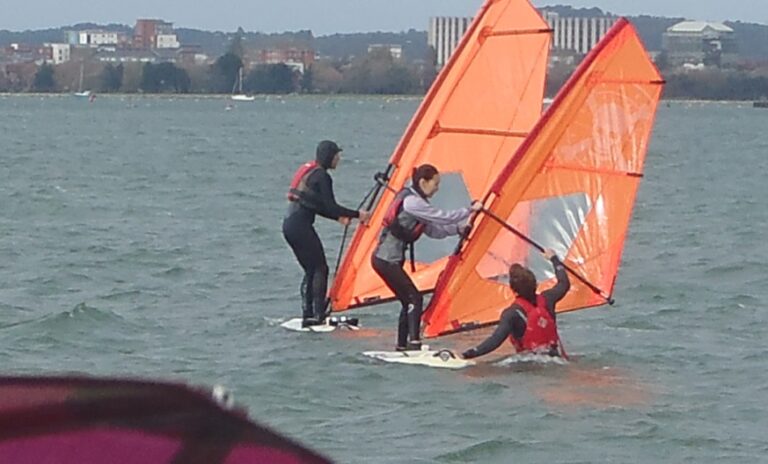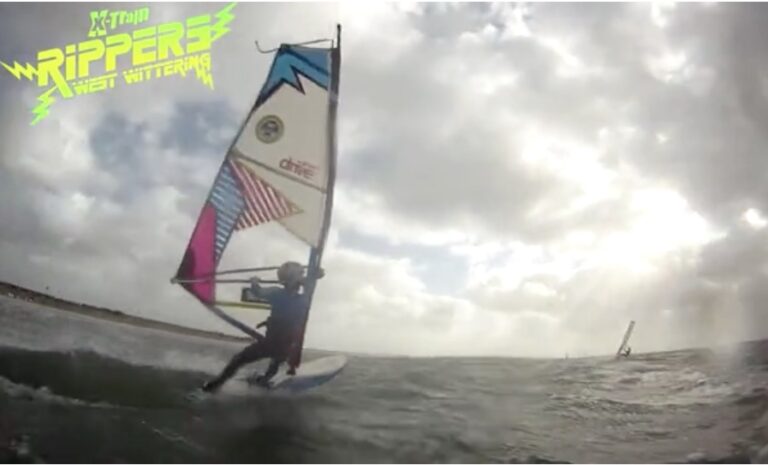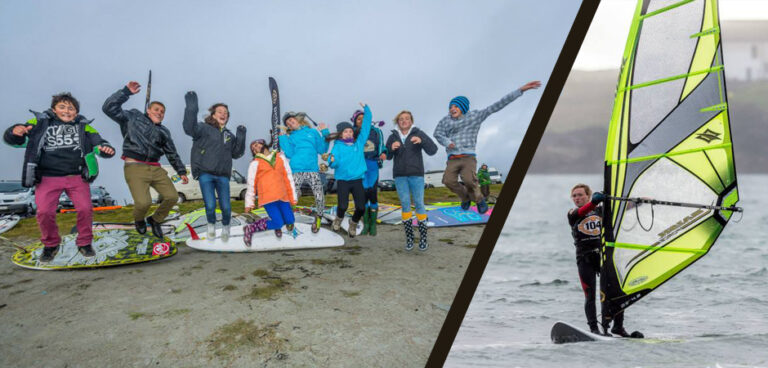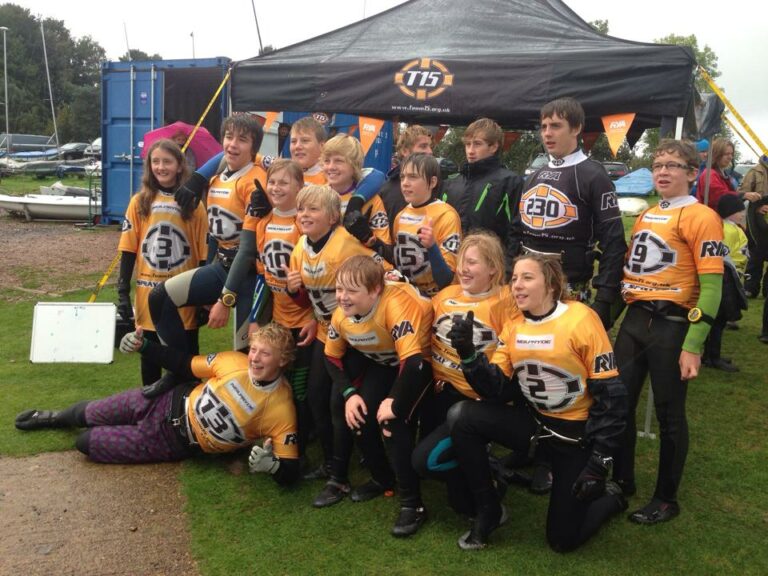Sam Ross and the RYA are here to guide you through to how reach your full windsurfing potential:
“If you were going to eat an elephant you would eat it in small pieces!”
It may be an interesting analogy but the point Sam Ross, one of the country’s top RYA-recognised windsurf instructors and a Team15 coach, is making is crystal clear: if you’re going to become a highly skilled windsurfer you cannot possibly tackle it all in one go.
Throughout this year we have taken a look at what you need to think about and do to progress in windsurfing with Amanda Van Santen and Gillian Wright offering advice to beginners and Tris Best upping the ante for the intermediates.
Now it’s Sam’s turn to look at tips to becoming an advanced windsurfer and his advice is a lot more common sense than technical.
Here are his three top tips for getting to the peak of your windsurfing powers:
 Time on the water is crucial
Time on the water is crucial
This is the same message that runs from beginners to intermediates and beyond.
But almost the better a windsurfer gets all too often the less time they spend actually going windsurfing as they are waiting for the perfect conditions.
It is natural to want to test yourself in stronger winds and bigger waves but being too sniffy about what you will go out in and your sail size can be counter-productive.
You can lose your windsurfing fitness very quickly and when you do go back out, when you think the conditions match your abilities, it can be quite hard and it is not because your skills have gone back in time just your body’s ability – strength and endurance – to handle doing something over and over in epic conditions.
Especially at this time of year when sailing time gets less and less as the days get shorter, and it gets colder out on the water, you want to give yourself the chance to still be able to go out and do as much as possible.
Getting a bigger board and some smaller kit for light winds just to play around and try to hone a few skills is one way to do it, although that is going to be fairly unpopular during the winter time because of the temperature.
You could also go for an early planing board with a bigger sail so you can go out for a blast when you have got the time, while the wind chill is less so it is more comfortable too.
Either way less does not equal more when it comes to pushing yourself to the highest levels possible in your windsurfing so invest in some kit that enables you to sail across the range and then actually use it.
 If you can’t get coached, learn how to coach yourself
If you can’t get coached, learn how to coach yourself
Make your time on the water as productive as possible as if you make the same mistakes over and over you will not improve.
There is a place for blasting up and down and going miles, it is fun for a start and, especially if you don’t get to go windsurfing that often, you want to enjoy it.
But if you don’t do anything different nothing is going to change and if you don’t try out any manoeuvres your skills are not going to get better.
Change things when you are sailing and have a focus for each session, like pros do.
How many gybes, tacks, jumps and forward loops can you do in a session?
Break down each manoeuvre and consider the mechanics of it. What are your body and board are doing at each stage of a manoeuvre – how you prepare for it, the midpoint and the exit.
You should be falling in during a session; if you stay dry you are not challenging yourself enough! If you fall in doing something one way then try it another. If it works one way where did you go right?
You can’t make an omelette without breaking a few eggs, or in this case a lot of eggs.
You could use the principles of the Fastfwd coaching formula, familiar to anyone who has been on an RYA windsurfing course, to break down each manoeuvre:
Vision – maintains your sailing line, look where you want to go
Trim – keeps the board flat
Balance / Counter Balance – forms our framework; the relationship between your body and the rigs, movement, forces and weight
Power – channels the rig’s forces
Stance – how you use your body; the relationship between your head hips and heels
Or keep it even simpler and just think about what your head, hands and feet, or your head, hips and limbs, are doing in a manoeuvre.
Constantly ask yourself what you are doing at each point and coach yourself as much as possible.
Mates’ feedback and filming your sessions can also make a massive difference. Go on the Boards forum, upload your video and ask for feedback, or find coaching videos on the internet and compare what you are doing to those.
Especially if it is cold focusing on one small piece at a time means you can make some quick wins in improving your technique without spending hours out there. You can’t make an omelette without breaking a few eggs, or in this case a lot of eggs.
One of the most common things with advanced windsurfers is going out and blasting around for two hours and trying tricks and manoeuvres for the last five minutes, the forward loop is a classic example of that.
It can take years and years to master if you are just doing a few in one session when you are waiting for conditions to be perfect. But try 30 in a session, even if the conditions are not spot on, and you will learn to master it a lot quicker.
Be brave, be unpredictable and don’t be snobby about what you will go sailing in and you will probably find you enjoy going windsurfing even more than you do already!
Check out Sam’s latest coaching videos at www.sam-ross.co.uk
Love Windsurfing? Then why not join the association that promotes and protects, safe, successful and rewarding British windsurfing. Join today and support the RYA in protecting your rights and freedoms. Take advantage of free advice and support on a wide range of windsurfing topics; enjoy free third party insurance, as well as a fantastic range of personal member offers. Find out more by calling 0844 556 9556, email [email protected] or visit www.rya.org.uk





